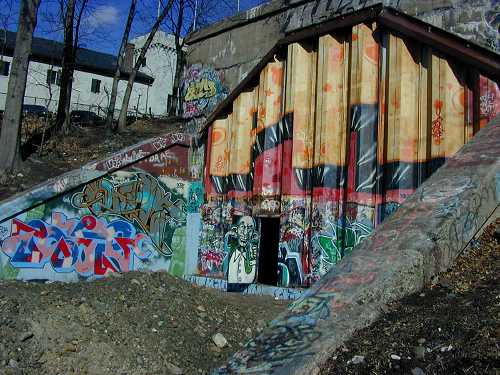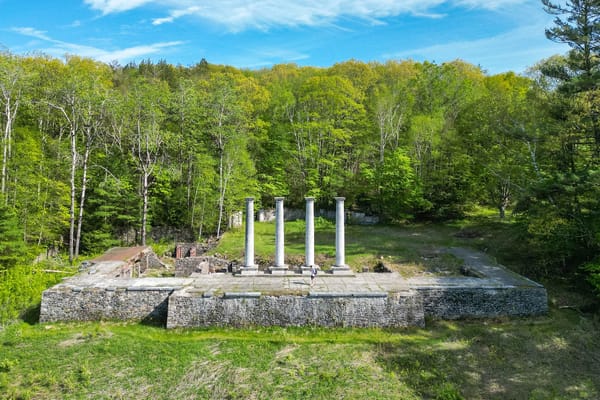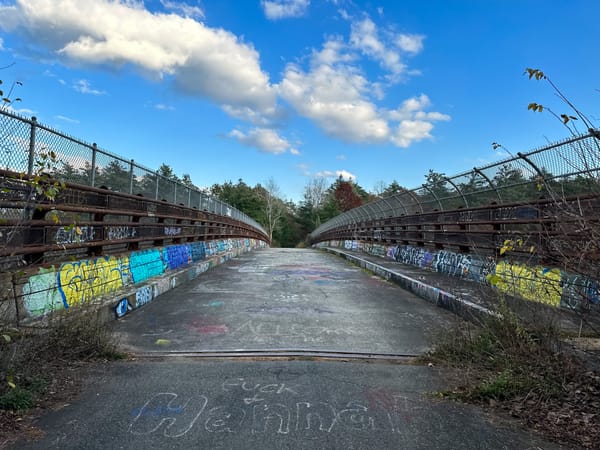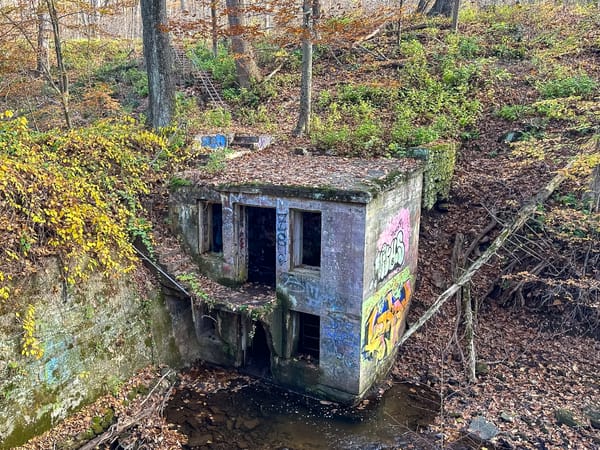East Side Railroad Tunnel - Western Portal (Providence, RI)
Hidden in plain sight beneath the bustling streets of Providence, Rhode Island, the Western Portal of the East Side Railroad Tunnel stands as one of the city’s most mysterious landmarks.

Exploring the East Side Railroad Tunnel – Western Portal: Providence’s Forgotten Gateway Beneath College Hill
Hidden in plain sight beneath the bustling streets of Providence, Rhode Island, the Western Portal of the East Side Railroad Tunnel stands as one of the city’s most mysterious landmarks. Once a vital artery of regional rail traffic, it now lies sealed and silent—a haunting monument to Providence’s industrial past and changing urban landscape.

The Birth of the East Side Railroad Tunnel
At the dawn of the 20th century, Providence was booming with commerce, industry, and growth. But the city’s geography—particularly the steep incline of College Hill—posed a challenge for rail connections between the city’s east and west sides.
To solve this problem, the East Side Railroad Tunnel was conceived. Construction began in the early 1900s, and after years of labor and engineering ingenuity, the 5,080-foot tunnel was officially opened on November 16, 1908, at a cost of $2 million—a staggering sum for the time.
The tunnel connected the Seekonk River rail yards near Gano Street with Downtown Providence, passing directly beneath College Hill and emerging near Benefit Street. For nearly seven decades, it served as a crucial link for both passenger and freight trains, threading together two halves of the city.

The Western Portal: A Hidden Landmark
The Western Portal, located near the intersection of Gano Street and Amy Street, marked the western entrance to this massive subterranean corridor. Trains once thundered through this dark archway, bound for downtown stations and beyond.
Architecturally, the Western Portal featured reinforced concrete walls and a wide arched opening framed by stone retaining structures. It was built to withstand the weight of both the hillside above and the vibrations of passing locomotives.
Over time, as the city modernized and automobile transportation took precedence, the importance of the tunnel began to fade. By 1976, all rail service through the East Side Tunnel had ceased, and the line was officially abandoned.
Decline and Sealing of the Portal
After its closure, the tunnel quickly became a destination for explorers, urban photographers, and curious locals. In the early 1980s, the rail viaduct leading from the Western Portal toward downtown was demolished, and the open-air approach was converted into a parking lot.
Then came an infamous event that cemented the tunnel’s reputation in local lore. On May 1, 1993, a group of students gathered at the Western Portal to celebrate Beltain–May Day, a spring festival with pagan roots. The celebration soon spiraled into chaos when campus security and police intervened to disperse the crowd. Tear gas, thrown bottles, and accusations of satanic activity dominated the headlines.
Following the incident, city officials moved to seal both portals of the tunnel with corrugated steel, welding them shut to prevent further access. From that day on, the East Side Tunnel officially entered its long slumber beneath Providence.
Attempts at Revival
Over the years, there have been periodic discussions about repurposing the East Side Tunnel—ideas have ranged from light rail or pedestrian use to public art installations. However, none have come to fruition.
Occasional art collectives and local historians have expressed interest in reimagining the space, but structural challenges and safety concerns have kept the tunnel closed. The Western Portal remains visible and intact, though locked behind heavy steel barriers and shrouded by overgrown vegetation.
The Tunnel Today
Today, the Western Portal of the East Side Railroad Tunnel remains one of Providence’s most intriguing urban relics. Visible from the roadside near North Main Street, its dark archway offers a glimpse into another era—a time when the city’s railways were its lifeblood.
While entry is prohibited, the site draws history enthusiasts and urban explorers who are captivated by its eerie stillness and century-old engineering. It stands as a reminder that beneath Providence’s modern streets lies a forgotten world of rails, echoes, and untold stories.
Visiting Information
- 📍 Address: North Main Street, Providence, Rhode Island
- 🌐 GPS Coordinates: 41.828111, -71.408361
- 🅿️ Parking: Ample roadside parking near the tunnel entrance on North Main Street
- 💰 Fees: Free
- 🕰 Hours: Visible year-round; the tunnel itself is sealed and closed to entry
- ⚠️ Safety: Do not attempt to enter the tunnel — it is welded shut and unstable inside
Quick Facts
- 🏗 Construction Completed: 1908
- 🚆 Length: 5,080 feet (0.96 miles)
- 💰 Cost: $2 million
- ⚙️ Original Use: Passenger and freight rail under College Hill
- 🚧 Closed to Rail Traffic: 1976
- 🏗 Viaduct Demolished: 1982–1983
- 🔒 Sealed: 1993 (after Beltain–May Day incident)
- 🎖 Historical Significance: Only urban rail tunnel of its kind in Rhode Island
- 🏞 Current Status: Sealed; visible from Gano Street and North Main Street
- 📸 Best Viewed: From roadside near the Western Portal
Final Thoughts
The East Side Railroad Tunnel’s Western Portal is more than a forgotten piece of infrastructure—it’s a window into Providence’s evolution from industrial powerhouse to modern city. Though locked away and silent, the tunnel still hums in the imagination of those who know it’s there, stretching unseen beneath College Hill.
For urban explorers, photographers, and local history buffs, this portal remains a captivating landmark—a hidden reminder of the city’s relentless progress and the ghosts of trains that once rumbled beneath its streets.



